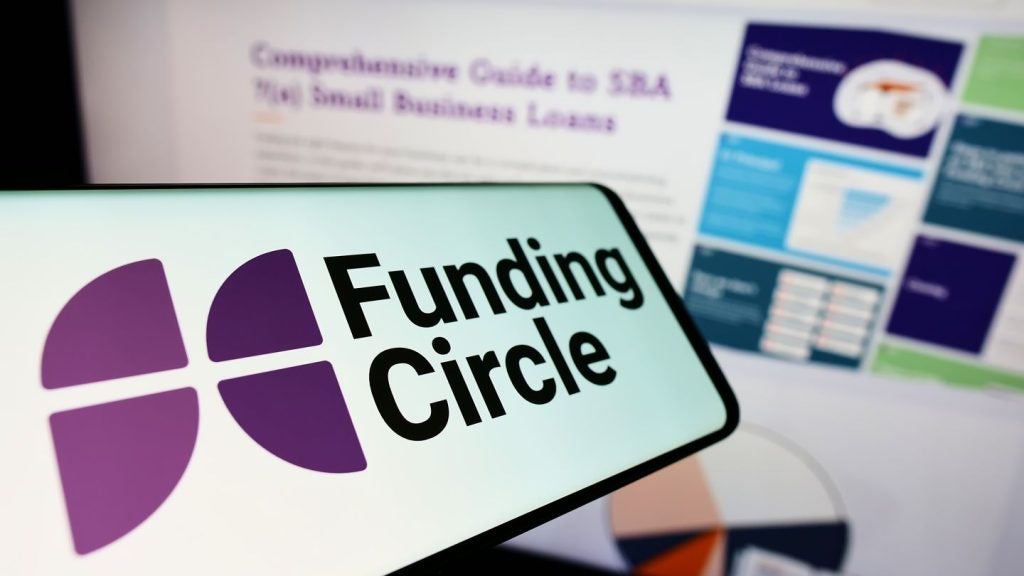
Equipment finance providers who use LIBOR as a benchmark to determine customer interest rates could be in for a period of financial volatility during the transition to alternative reference rates beginning on 1 January 2022. Che Golden reports
The recent announcement from the Financial Conduct Authority (FCA) that it would allow banks and other financial institutions to use a watered-down version of LIBOR proves that, despite the risks, many businesses are still not ready for the transition at the end of this month.
While it might seem that the FCA are throwing a lifeline to non-compliant companies, industry experts have warned that so-called ‘synthetic’ LIBOR could carry more risks than the original benchmark.
Banks will be able to apply the LIBOR benchmark on the existing pound- and yen-denominated contracts that have not been restructured to a new rate until the end of December.
The FCA justified the decision to extend the use of LIBOR on certain contracts due to the “scale and nature of legacy contracts that do not have adequate provisions to deal” with moving onto a new benchmark in such a short timeframe.
But scale and resources may have little to do with some customers lack of preparation. A survey conducted by UK Finance, the finance and banking trade association, found that a quarter of businesses (25 per cent) are unsure if they have a loan or contract linked to LIBOR that could be affected by the change.
How well do you really know your competitors?
Access the most comprehensive Company Profiles on the market, powered by GlobalData. Save hours of research. Gain competitive edge.

Thank you!
Your download email will arrive shortly
Not ready to buy yet? Download a free sample
We are confident about the unique quality of our Company Profiles. However, we want you to make the most beneficial decision for your business, so we offer a free sample that you can download by submitting the below form
By GlobalDataThe survey of 1,200 businesses, conducted by UK Finance, found that most of the businesses unaware of their potential LIBOR exposure were SMEs.
The survey also highlighted that just under half (48 per cent) of the businesses who had heard of LIBOR didn’t know it was coming to an end – this figure included businesses who don’t have a LIBOR product and would therefore not need to be engaged with the transition process.
Synthetic solutions
This lack of preparedness is going to cost them, according to Elaine Ashplant, professional support lawyer with Watson, Farley and Williams. One of the biggest problems is that companies will not have access to the full range of LIBOR rates.
“Synthetic LIBOR only offers three rates – one month, three months and six months,” she pointed out. “Whereas for LIBOR you also have overnight, one week and then two months and then you also had 12 months. What the synthetic LIBOR does is based on Term SONIA, but they have added an adjustment spread to compensate for the fact that so-called risk-free rates like SONIA are lower. I think the authorities have done what they can to try and preserve the economic steps of the difference in the two rates, but there will be holes.”
LIBOR: From collusion to reform
The London InterBank Offered Rate, a benchmark for over US$350 trillion in financial contracts worldwide, was adopted by the British Bankers Association (BBA) in 1986 as a system where traders at banks were asked to estimate the rate at which they could borrow funds.
But, following a series of scandals involving LIBOR manipulation among the rate-setting banks, the benchmark was earmarked for review and eventual phasing out.
In June 2012, Barclays Bank entered into a $360m settlement with the US authorities after Barclays attempted to manipulate LIBOR between 2005 and 2009. The UK’s financial regulator at the time, the FSA, fined Barclays $92.5m for its attempted manipulation of LIBOR.
Another casualty from the scandal was the BBA, which was disbanded. UK Finance is today the bankers’ trade body in the UK.
In September 2012, Martin Wheatley, the managing director of the FSA, who had been appointed by the UK government to review LIBOR scandal, released the findings of his report and outlined measures for its reform.
In July 2017, Andrew Bailey, the then Governor of Bank of England, announced that by end of 2021 the Financial Conduct Authority (FCA) would no longer require a panel of banks to submit quotes for LIBOR, making it clear that LIBOR’S days were numbered.
Andrew Baird, partner at Watson, Farley and Williams pointed out that if companies continue to operate on synthetic LIBOR, it might lead to a mismatch in funding arrangements.
“It is all a bit complicated,” says Baird. “Banks are ready for it; they just have not decided what they want to do yet. I am not convinced customers are ready for it at all.”
In terms of cross border trade, life is going to get a lot more complicated. The risks of LIBOR may be gone, but now firms are going to have to deal with three methodologies and learn to grapple with backward-looking rates.
“With LIBOR, if you had facilities for euros, dollars and sterling, you had one mechanism that operated for all of them,” says Ashplant. “If the dollar market moves into Term SOFR, sterling into SONIA and then you still have EURIBOR, you effectively have three different methodologies. It is potentially problematic going forward.”
Backward-looking rates
The problem with backward rates is that less sophisticated borrowers are going to find them hard to deal with, so fixed rates for certain companies are going to make a comeback. This is not necessarily a positive move.
As a backward rate, the rate of SONIA cannot be determined until the end of the applicable period. As a forward-looking rate, LIBOR is pre-determined for each period on the first day of each applicable interest period. Both borrower and lender know what rate applies for the duration of each interest period.
It is possible a move to SONIA could create uncertainty in the market because the applicable rate, and therefore the interest payable on the final day, cannot be determined until the final day. SONIA might also make it more difficult for borrowers to prepay principal or refinance their facilities mid interest period, since calculations cannot be carried out in advance of the prepayment being made.
“In general, everyone really wants to use a forward-looking rate,” says Baird. “So, the dollar market, banks and other interested parties are kind of holding out in the hope for what is going to be primarily adopted. The UK authorities rejected this route for sterling except in a few limited use cases, but no doubt in a few years people will look at it and evaluate if it’s working. The rates are not without their problems, obviously.”
Joe MacFarlane, associate director at Alfa, feels that the regulatory bodies were not overly prescriptive on the single right way to do risk rates for everybody.
“They wanted the bulk of the market by value of contract to be on a model that faithfully tracked the rates used in real transactions, as that removes various elements of market risk that were inherent to a heavy dependence on LIBOR,” he says.
“However, for a less sophisticated customer base with smaller contract values, a simpler model is probably okay. For example, if you are renting cars through a bank that has an auto-finance portfolio, they are going to be signing new contracts fairly quickly, and so even if they use a simpler term rate model, or indeed simple fixed rates, the aggregate rate of their portfolio will track the overall cost of funds in the market in a predictable way. This would not be true for a portfolio composed of a smaller number of high-value transactions,” says MacFarlane.
He adds, if you are financing jumbo jets, or factories, or any asset in the range of 100m dollars or pounds, it is important that the customer finance rate tracks your cost of funds directly as well as the rates used on other lines of business that you are hedging against your finance portfolio, and the perceived cost of replacing funds should the relative proportions of credit and debit portfolios change suddenly.
If your portfolio is made up of a few hundred high-value deals then using a simpler model introduces interest rate risk – even if only a handful of high-value deals get locked into a rate that diverges from the market, it may be complex or expensive to mitigate the gap between funding and credit rates, he says.
MacFarlane notes that backward-looking rates involve trade-offs but are a necessary reality for the market and may have some silver linings.
“The advantages of linking directly to real data outweigh the minor lag introduced here. The nature of the calculation means that changing market conditions would impact a much shorter range within an interest period [rather than a whole interest period as would have been the case for LIBOR], with the look-back providing a certain amount of breathing space for both parties to respond.
“Alfa has recently been enhanced to support the regulator-recommended approaches for high-value contracts in affected jurisdictions, as well as a range of simpler alternatives appropriate for smaller transactions. Our clients do cross border business with a wide variety of customers across that spectrum, so they often need both models. That was the key concern, flexibility in the face of changing requirements and different preferences emerging in different parts of their customer portfolio,” he adds.
Consider the implications
Alfa’s clients are in the auto, equipment and wholesale finance businesses and MacFarlane feels there has been no hesitancy within the industry in making the transition.
Anyone who is not yet ready to make the transition has the option of allowing all their legacy business to remain on the synthetic LIBOR rate, but must consider the implications, he suggests.
“The synthetic calculation will aim to provide a reasonable and fair approximation of what LIBOR would have been but will no longer represent an underlying market.
“It may become more difficult to align the rolling cost of funds with the legacy slice of the portfolio, and indeed to reason about the portfolio as a whole. Moving swiftly onto the appropriate risk-free rate approach will simplify these concerns as well as avoiding as yet unknown issues and risks that may arise with the synthetic rate,” he adds.
While it may seem like everything is happening at five minutes to midnight, trading is beginning to move away from LIBOR at a faster rate. Together with Clarus Financial Technology, a specialist data and analytics company, the International Swaps and Derivatives Association (ISDA) publishes a monthly report on the adoption of RFRs.
Overnight risk-free rates (RFRs)
- Central Banks have launched compounded indexes for risk-free rates including SOFR, €STR, SONIA and TONA.
- SOFR Index – published by the Federal Reserve Bank of New York
- €STR Index – published by the European Central Bank
- SONIA Index – published by the Bank of England
- TONA Index – published by Quick for the Bank of Japan
The recent announcement from the Financial Conduct Authority (FCA) that it would allow banks and other financial institutions to use a watered-down version of LIBOR proves that, despite the risks, many businesses are still not ready for the transition at the end of this month.
While it might seem that the FCA are throwing a lifeline to non-compliant companies, industry experts have warned that so-called ‘synthetic’ LIBOR could carry more risks than the original benchmark.
Banks will be able to apply the LIBOR benchmark on their existing pound and yen-denominated contracts that have not been restructured on to a new rate until the end of December.
The FCA justified the decision to extend the use of LIBOR on certain contracts due to the “scale and nature of legacy contracts that do not have adequate provisions to deal” with moving onto a new benchmark in such a short timeframe.
But scale and resources may have little to do with some customers lack of preparation. A survey conducted by UK Finance, the finance and banking trade association, found that a quarter of businesses (25 per cent) are unsure if they have a loan or contract linked to LIBOR that could be affected by the change.
The survey of 1,200 businesses, conducted by UK Finance, found that most of the businesses unaware of their potential LIBOR exposure were SMEs.
The survey also highlighted that just under half (48 per cent) of the businesses who had heard of LIBOR didn’t know it was coming to an end – this figure included businesses who don’t have a LIBOR product and would therefore not need to be engaged with the transition process.
UK asset finance market grew by 5% in November 2021







